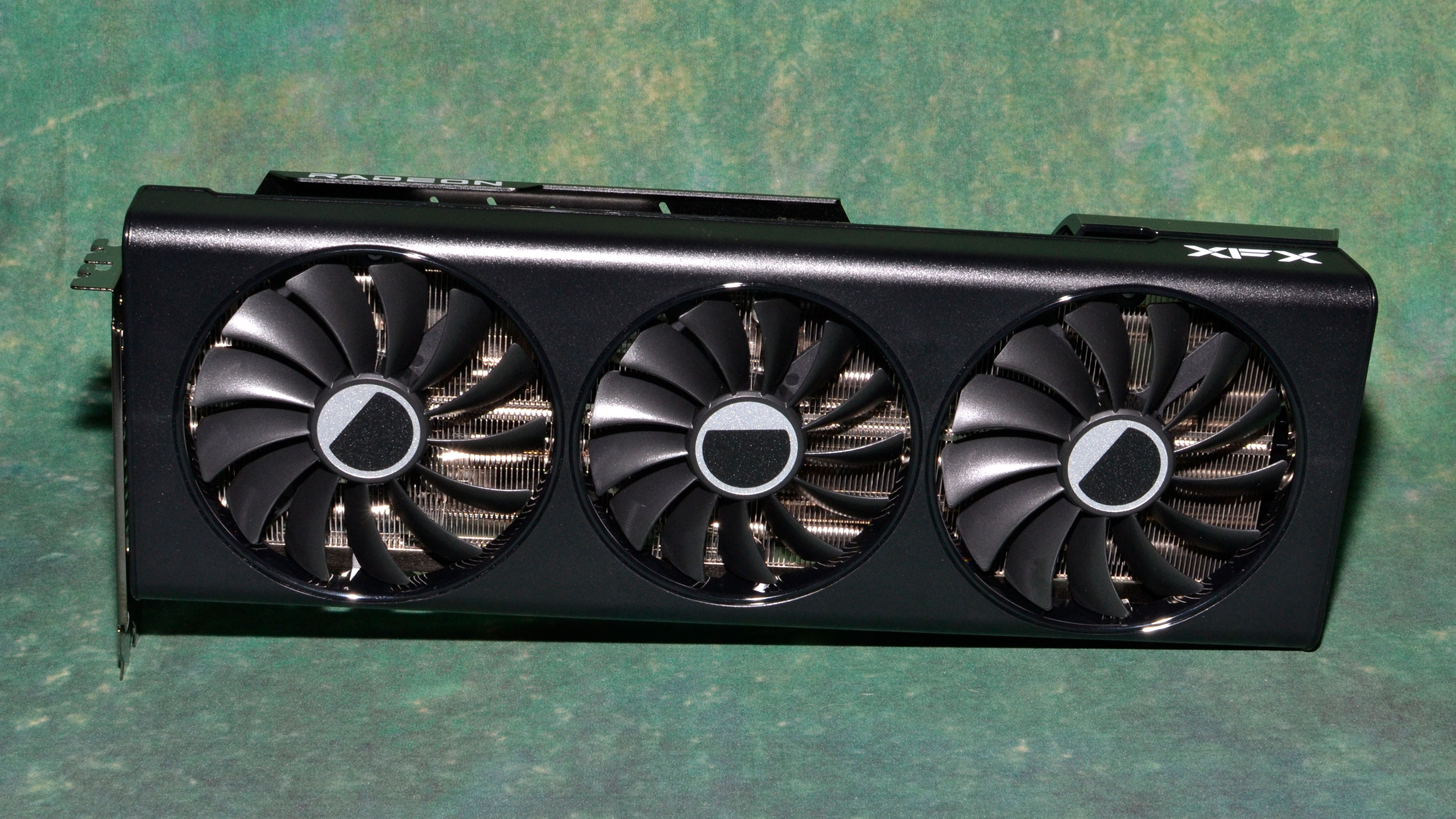Why you can trust Tom's Hardware
Radeon RX 7700 XT AI Performance
GPUs are also used with professional applications, AI training and inferencing, and more. Along with our usual professional tests, we've added Stable Diffusion benchmarks on the various GPUs. AI is a fast-moving sector, and it seems like 95% or more of the publicly available projects are designed for Nvidia GPUs. Those Tensor cores aren't just for DLSS, in other words, but AMD now has "AI Accelerators" in RDNA 3 to help boost FP16 performance for such workloads. Let's start with our AI testing and then hit the professional apps.
We're using Automatic1111's Stable Diffusion version for the Nvidia cards, while for AMD, we're using a recent Nod.ai Shark variant — we've retested all the AMD cards for this review using build version 20230713_819, as results have improved substantially compared to our previous testing. Meanwhile, Intel finally has an OpenVINO fork of Automatic1111's webui, which shows about a 50% improvement over our previous testing. We've retested those cards as well, now with Stable Diffusion 2.1 and 768x768 results.
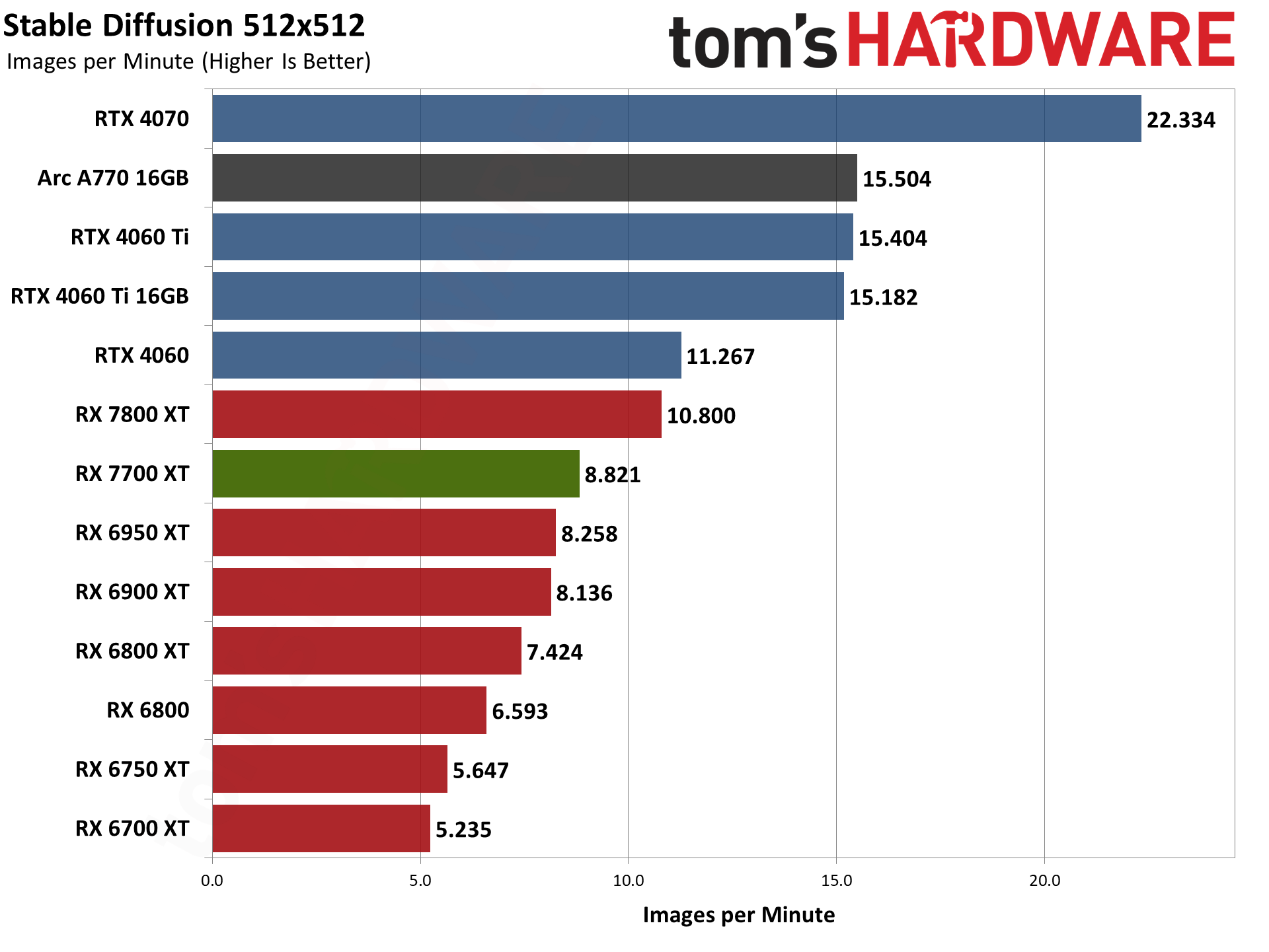
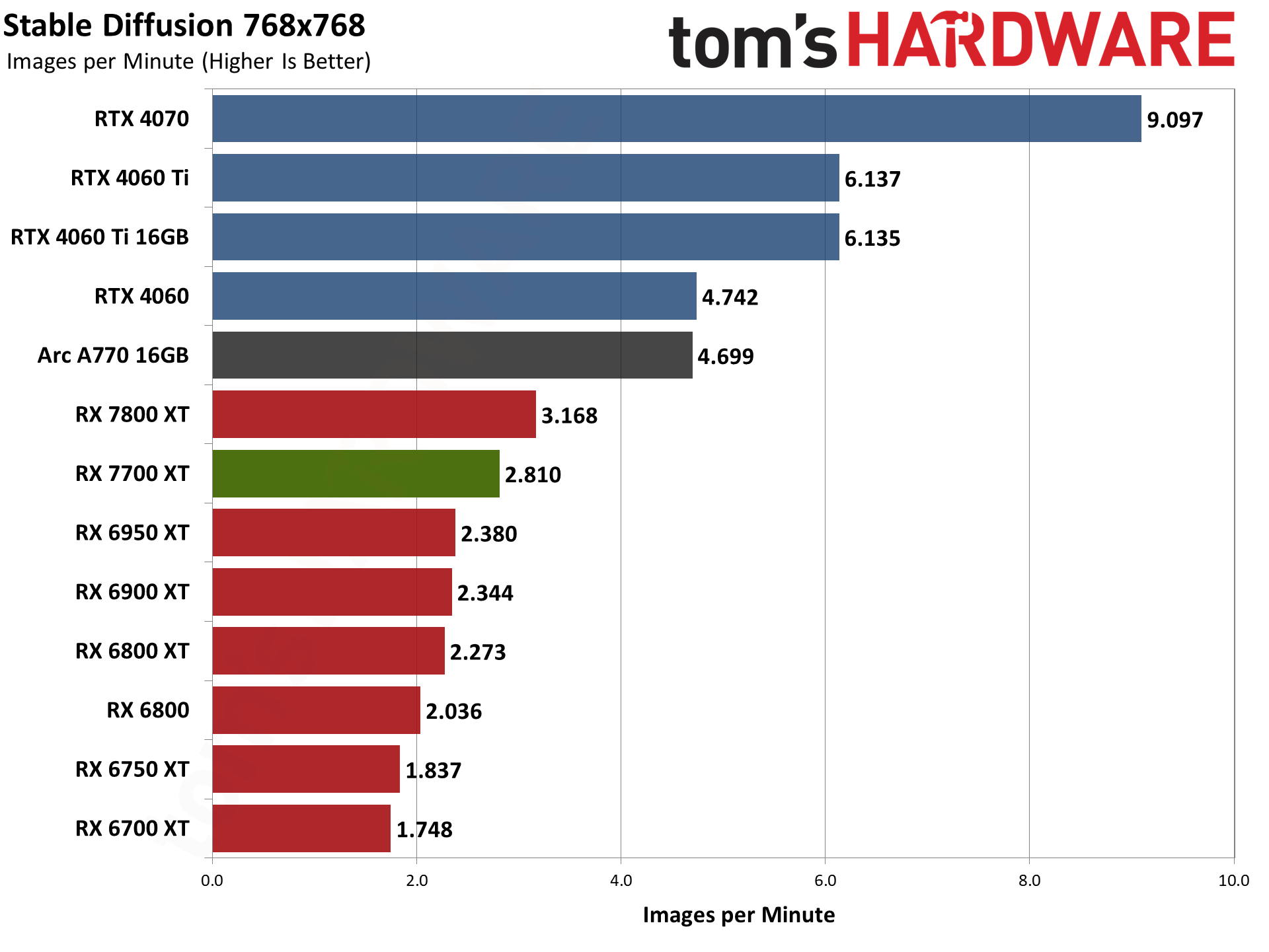
AMD's GPUs continue to look relatively weak in Stable Diffusion, even with the latest Nod.ai software. We've retested all of the AMD GPUs, and the performance of the RX 7700 XT can't even match the RTX 3060, though it does at least manage to beat the RTX 3050. Also, the RX 7700 XT still beats every previous generation RX 6000-series GPU.
It's not clear how much of that is due to custom tuning on the part of Nod.ai, but we did manage to get Automatic1111 running via DirectML. It was universally slower than the Nod.ai version, so we decided to stick with Nod.ai for now. Note also how much Intel Arc has improved over time, with performance that now rivals the RTX 4060 Ti — it's slightly ahead for 512x512 image generation, but only matches the 4060 in 768x768 images.
Radeon RX 7700 XT Professional Workloads
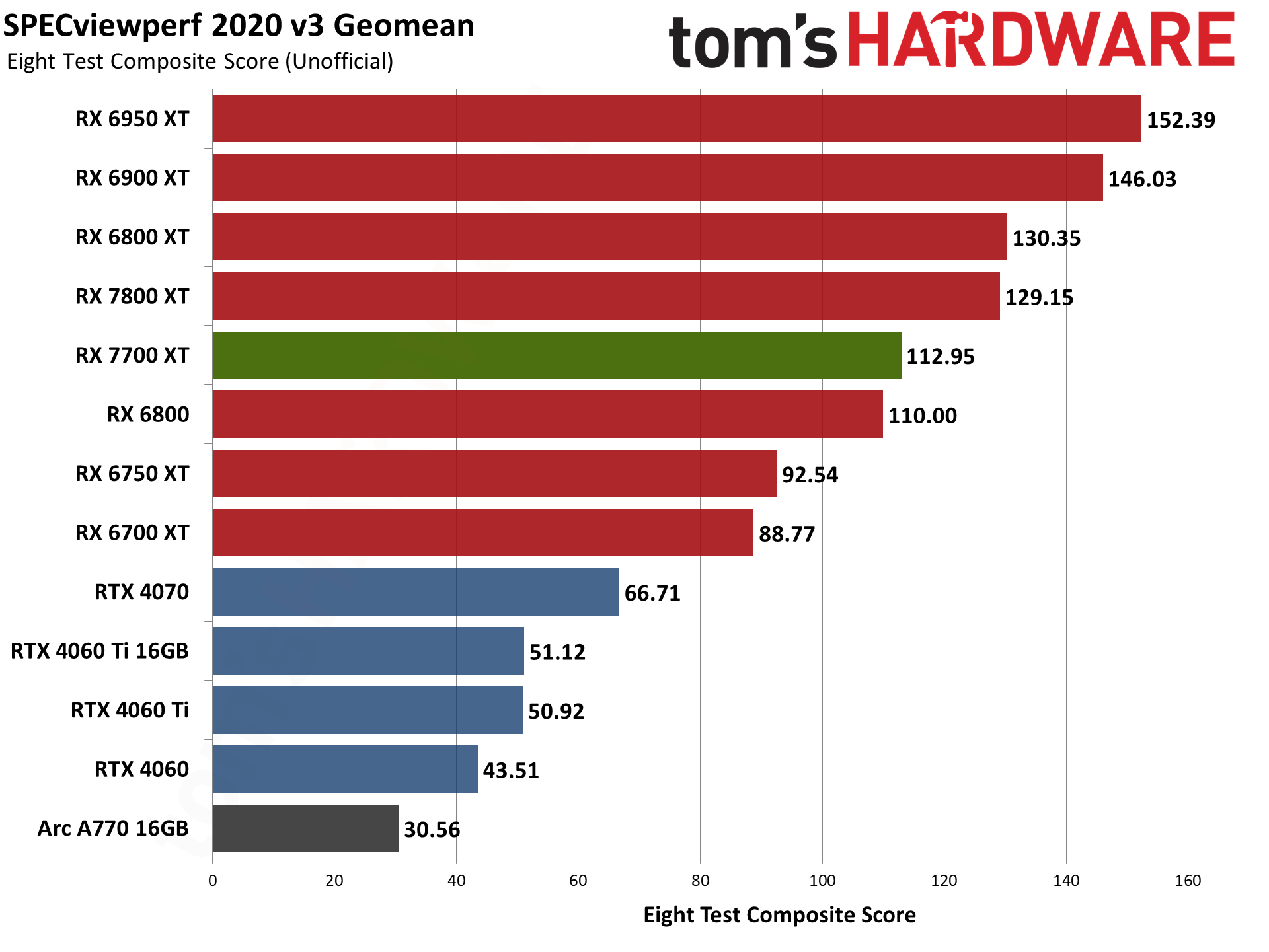
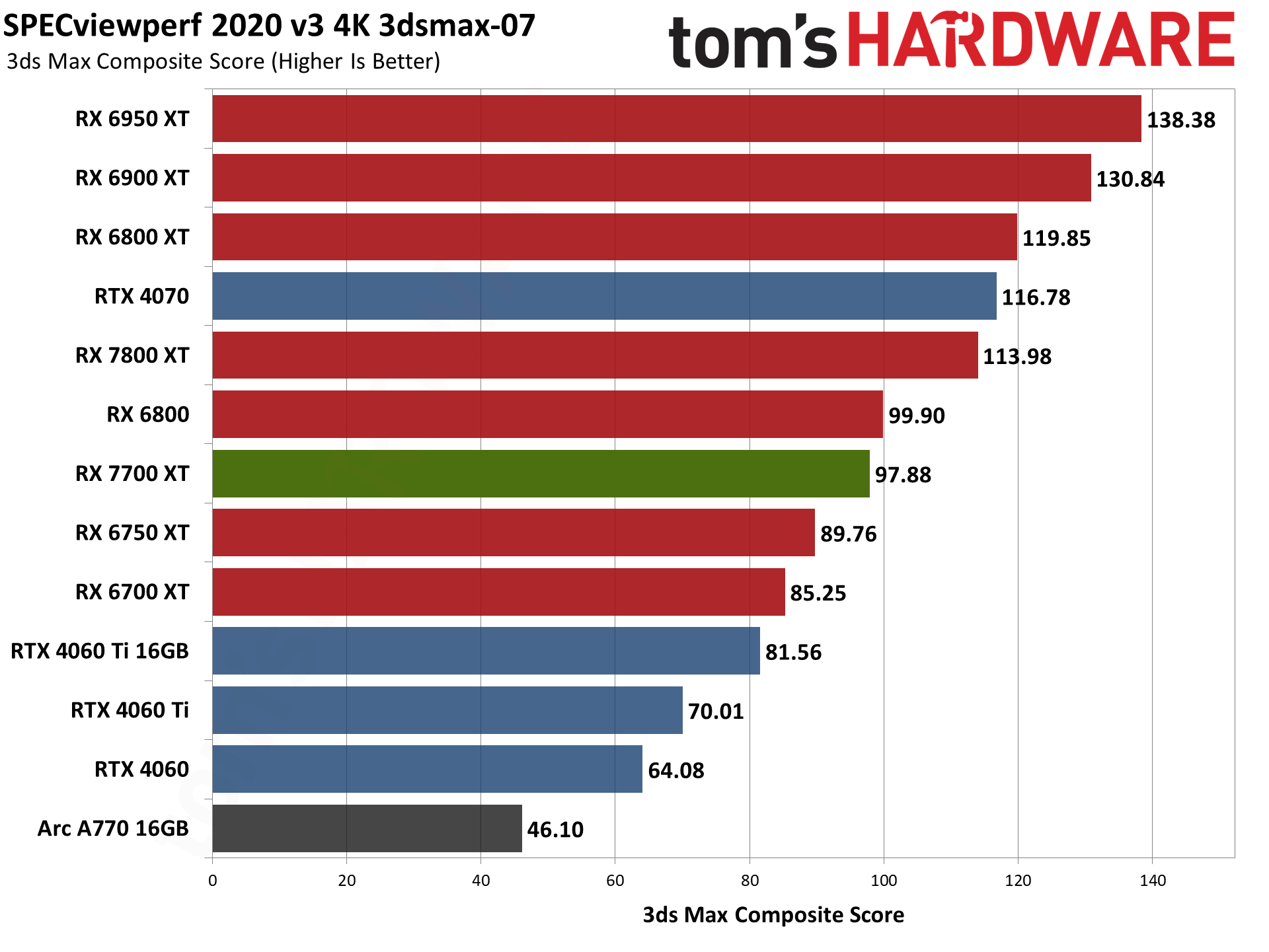
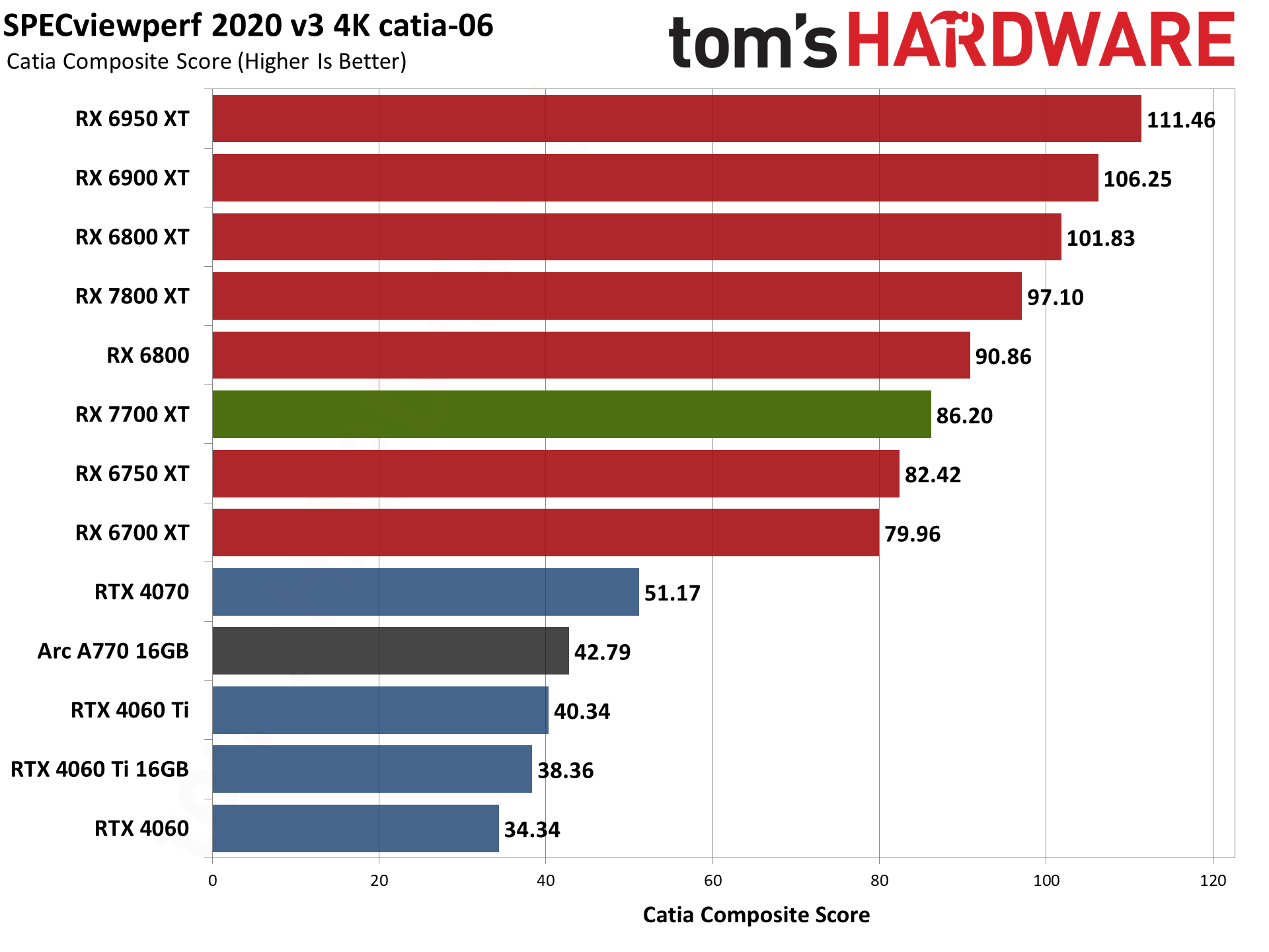
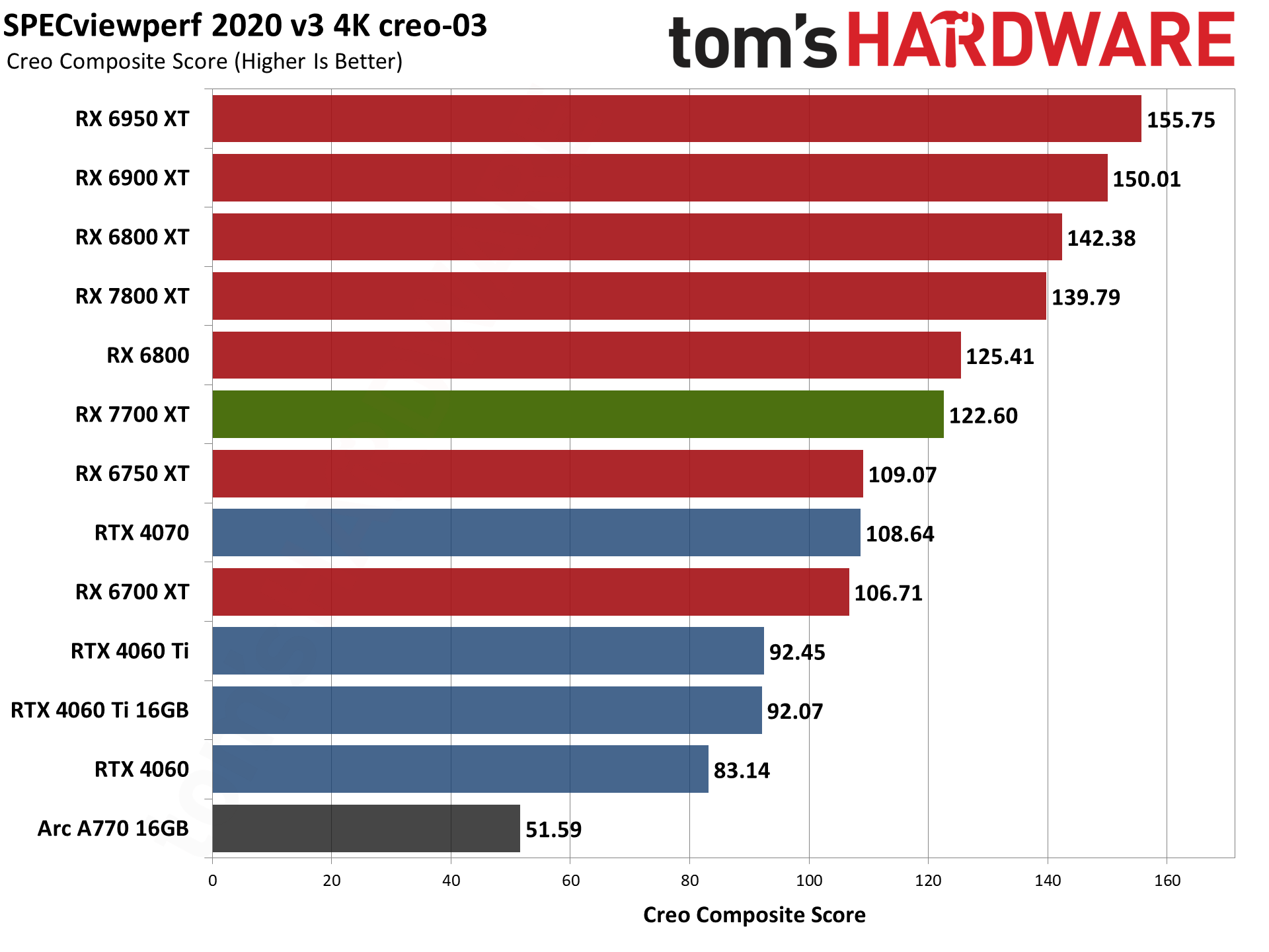
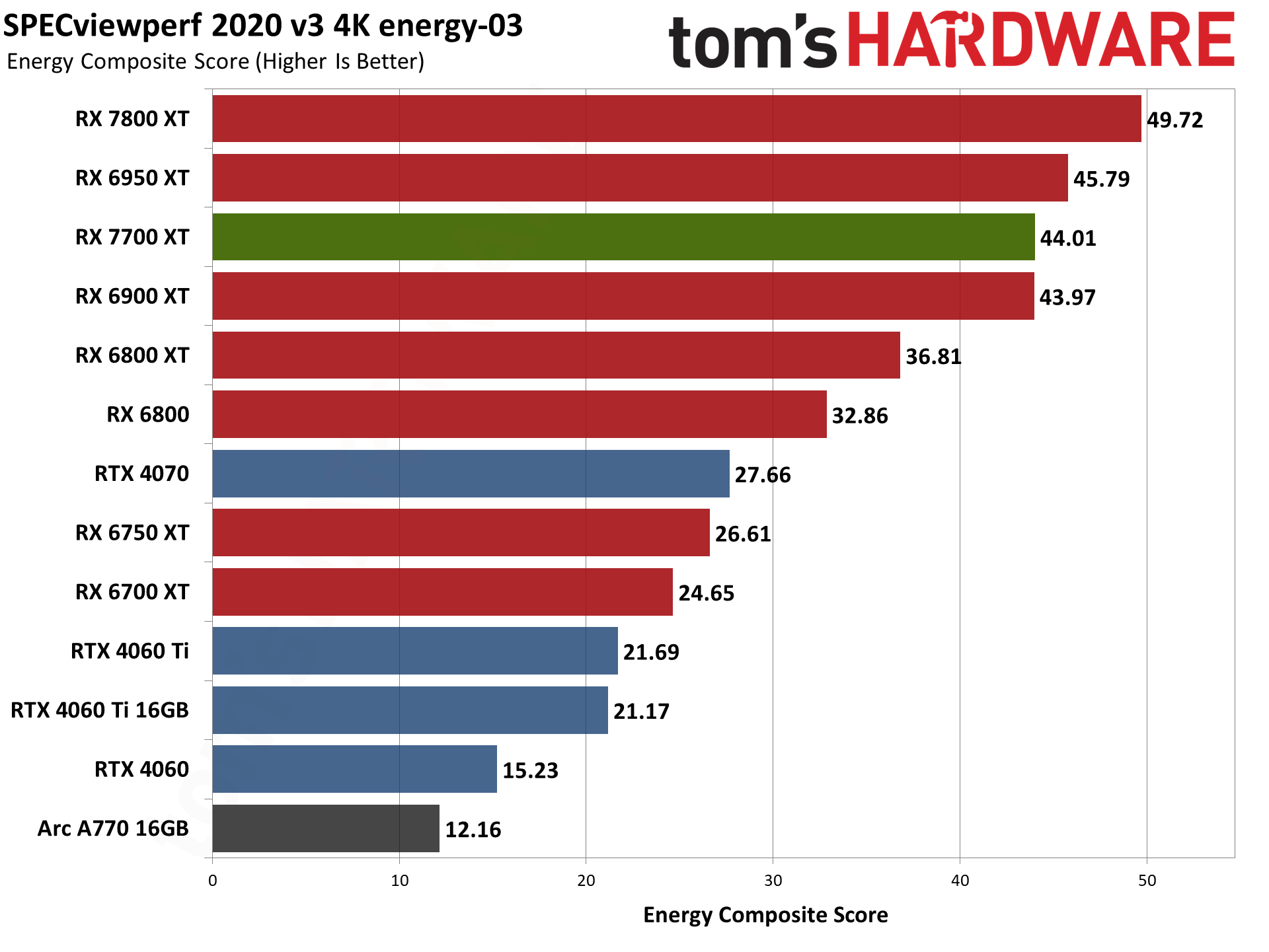
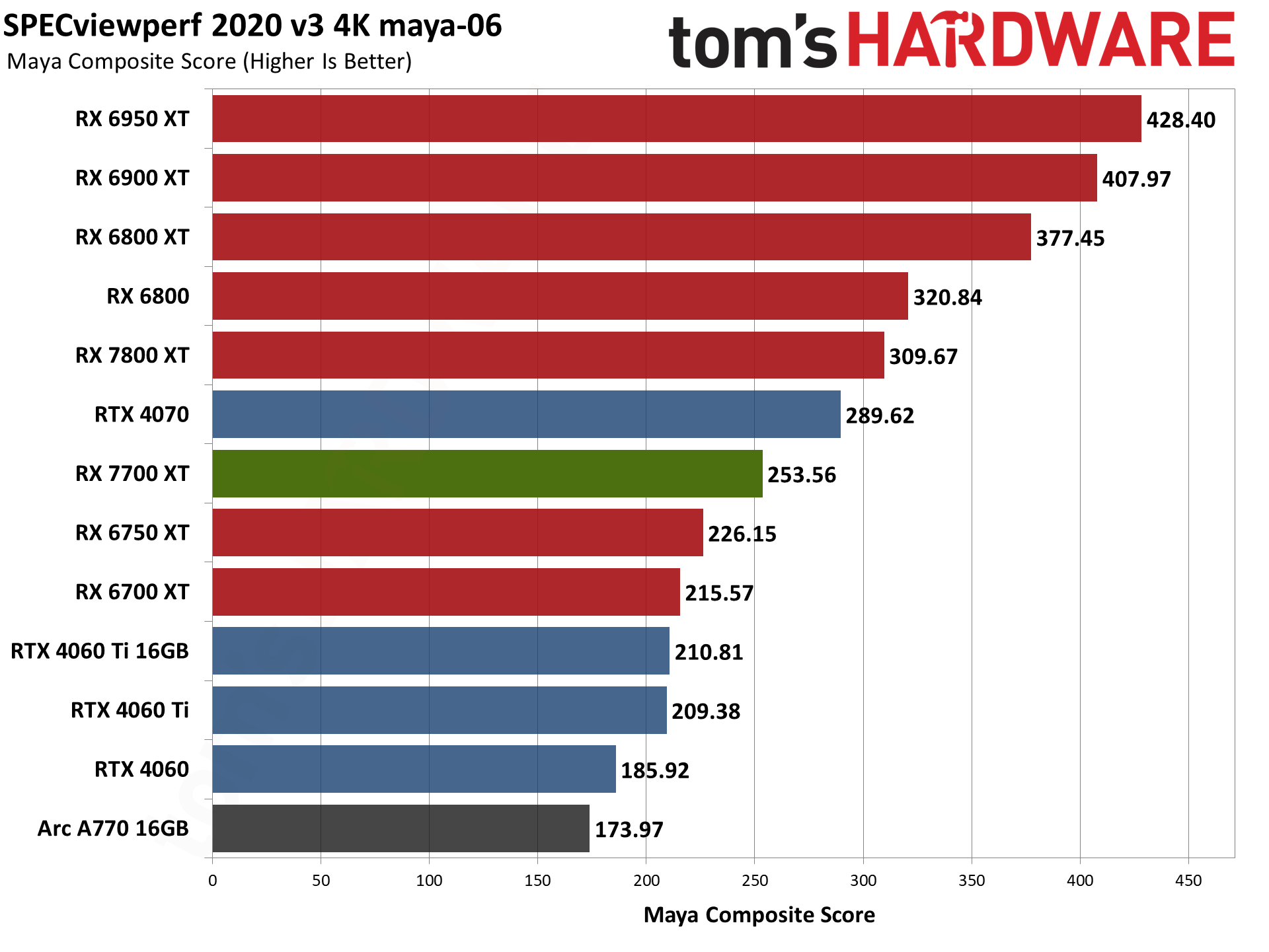
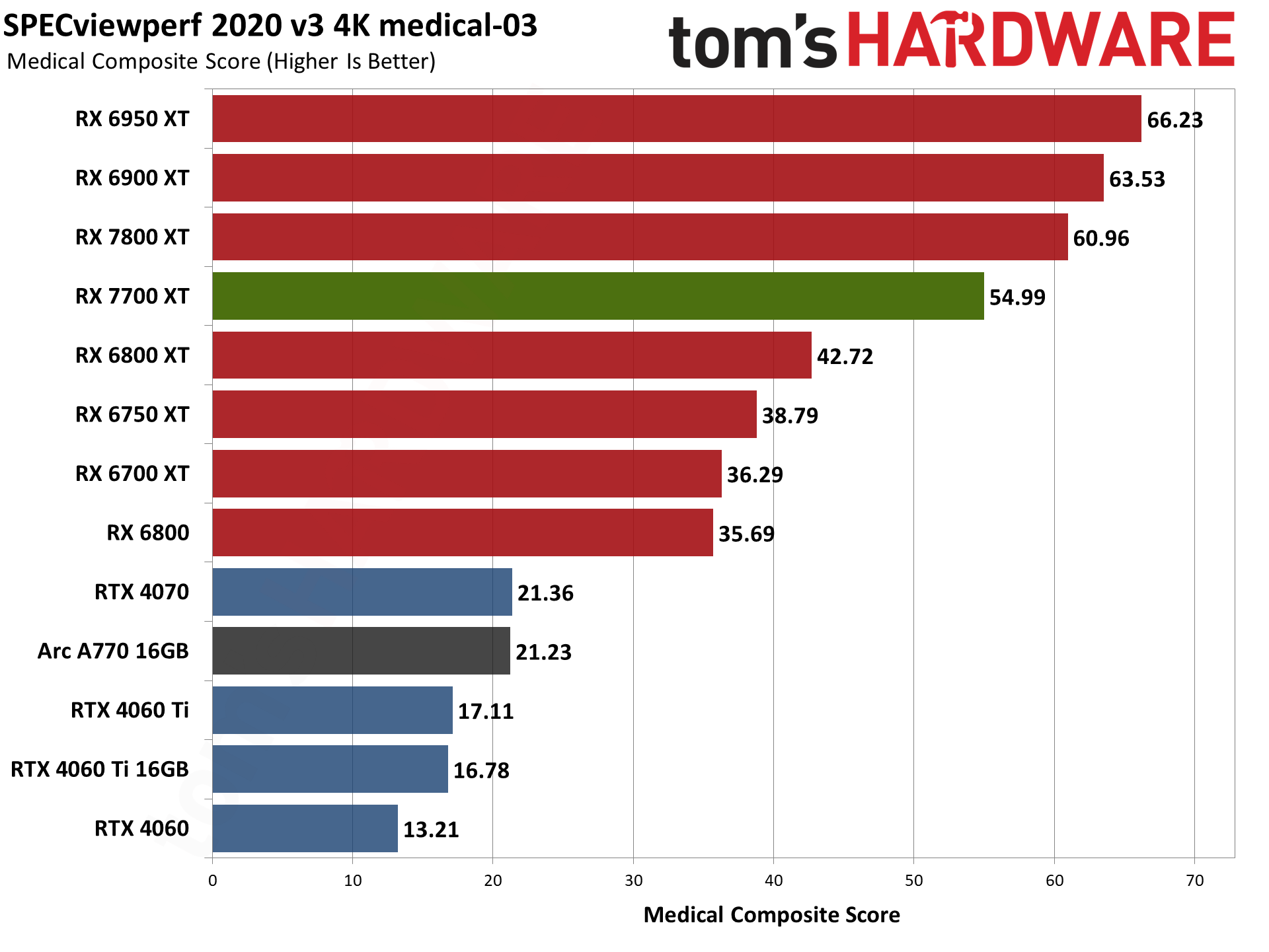
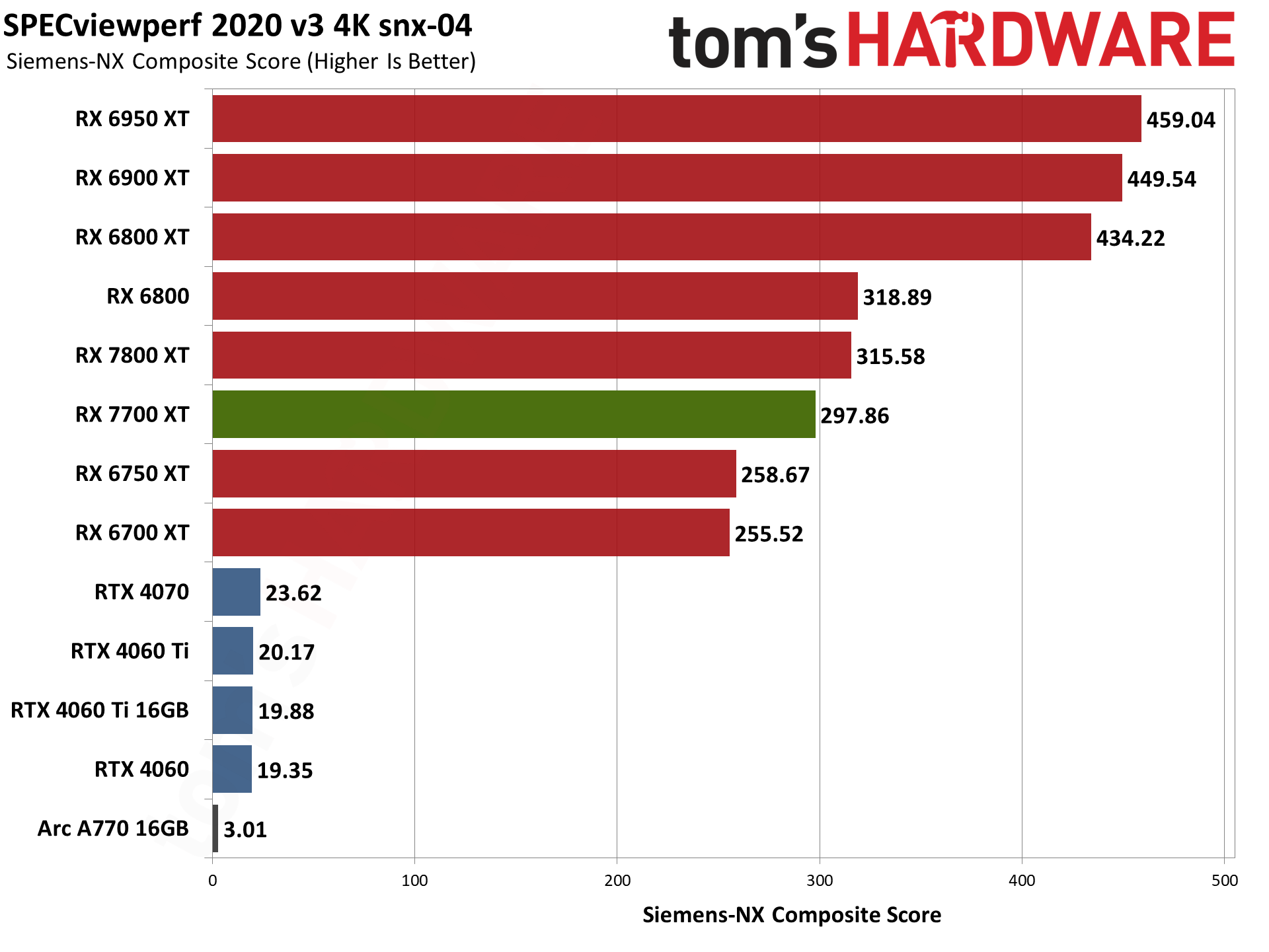
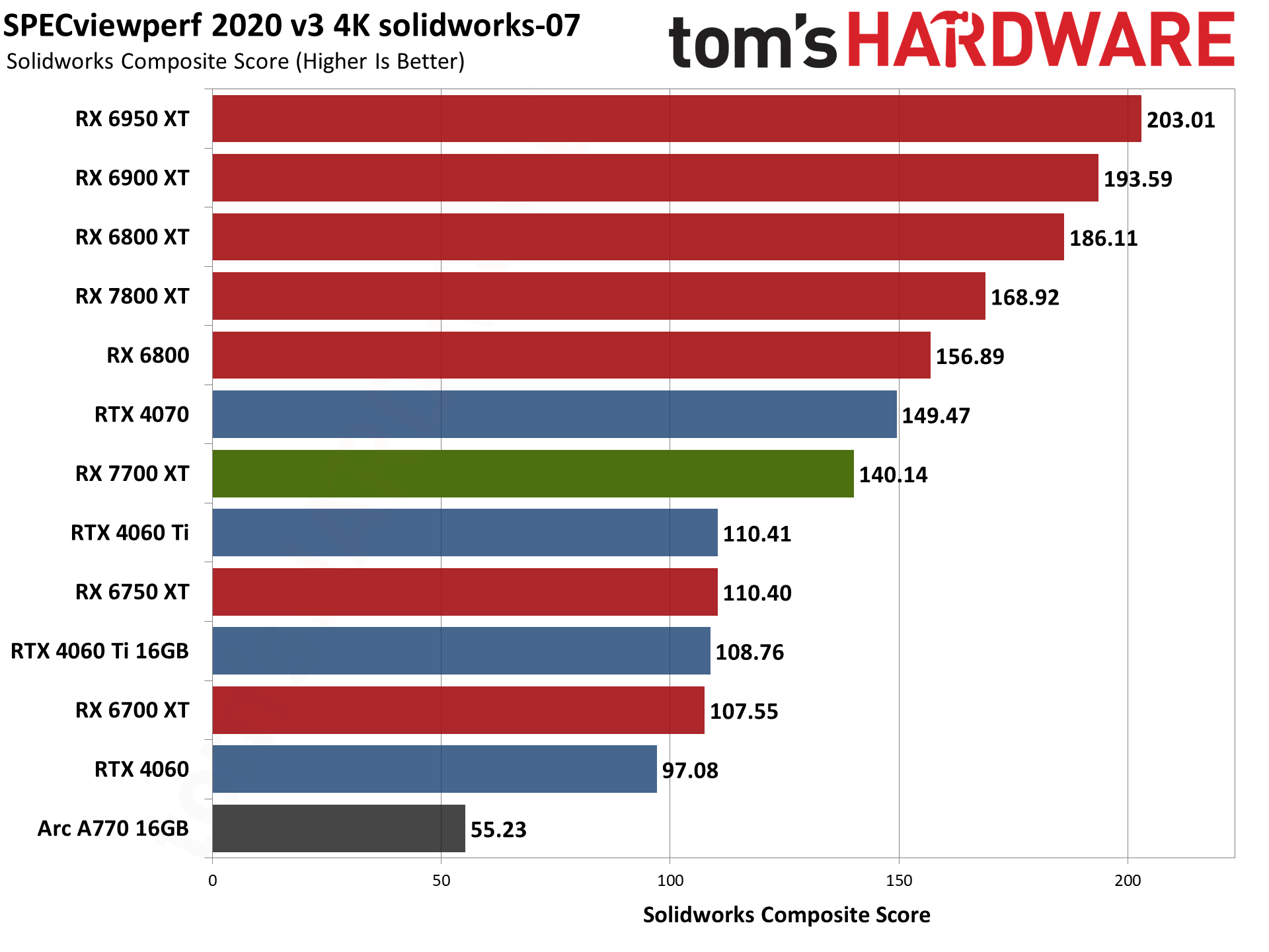
SPECviewperf is a different story, as AMD has been more willing to release drivers that help boost professional application performance even on consumer hardware. There are eight different benchmarks, and we use the geometric mean from those to generate an aggregate score — that's not an official score, but it gives an easy way of at least approximating overall performance. Few professionals use all these programs, however, so it's generally more important to look at the results for the application(s) you plan to use.
AMD's RX 7700 XT sweeps the RTX 4060 Ti in SPECviewperf, leading by anywhere from 20% (Maya-06) to as much as 1377% (SNX-04). Nvidia prefers to keep its best optimizations for some of these professional apps (SNX in particular) locked behind its professional drivers. Even the old RX 6700 XT typically outperforms Nvidia's RTX 4060 Ti.
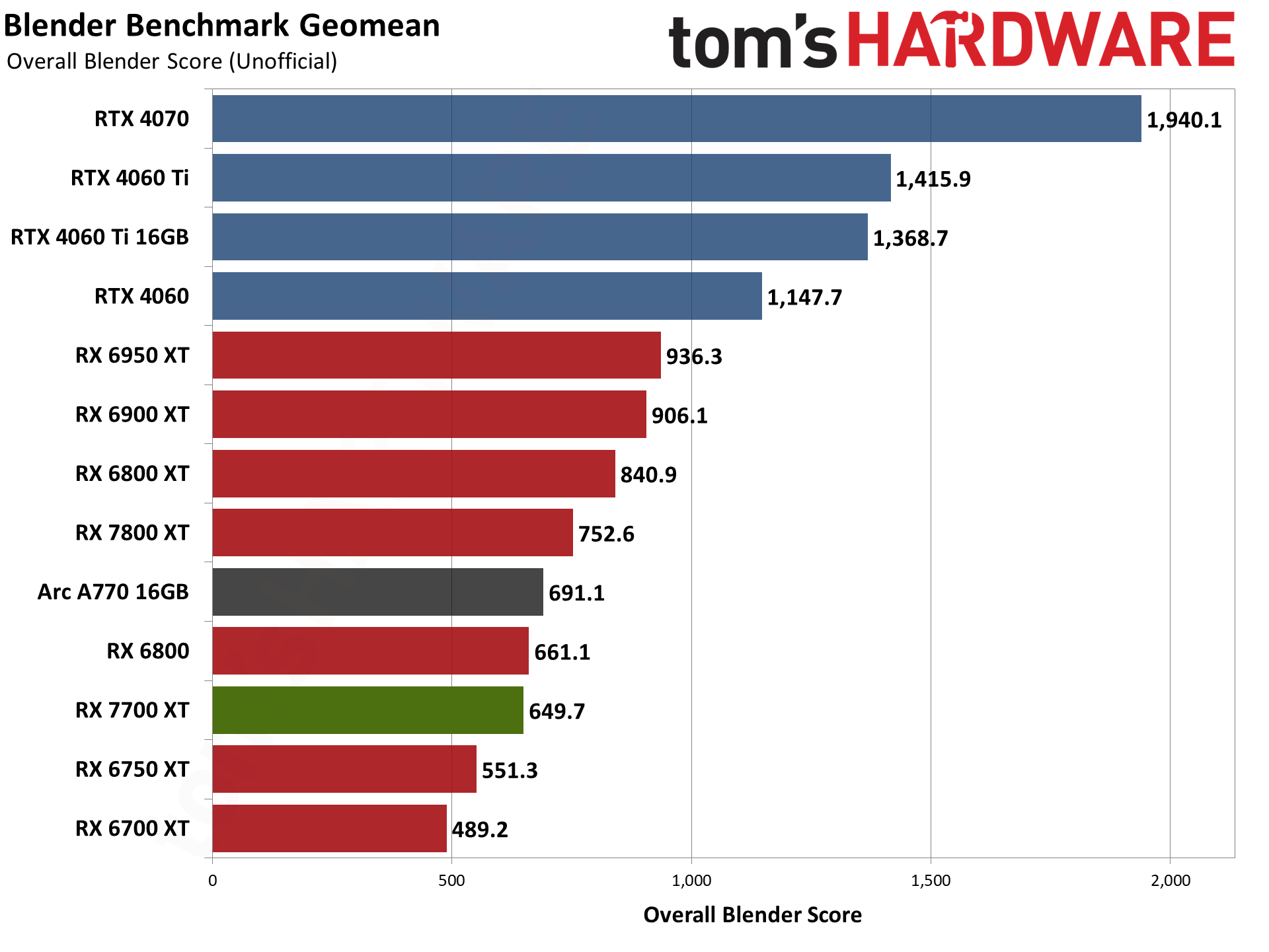
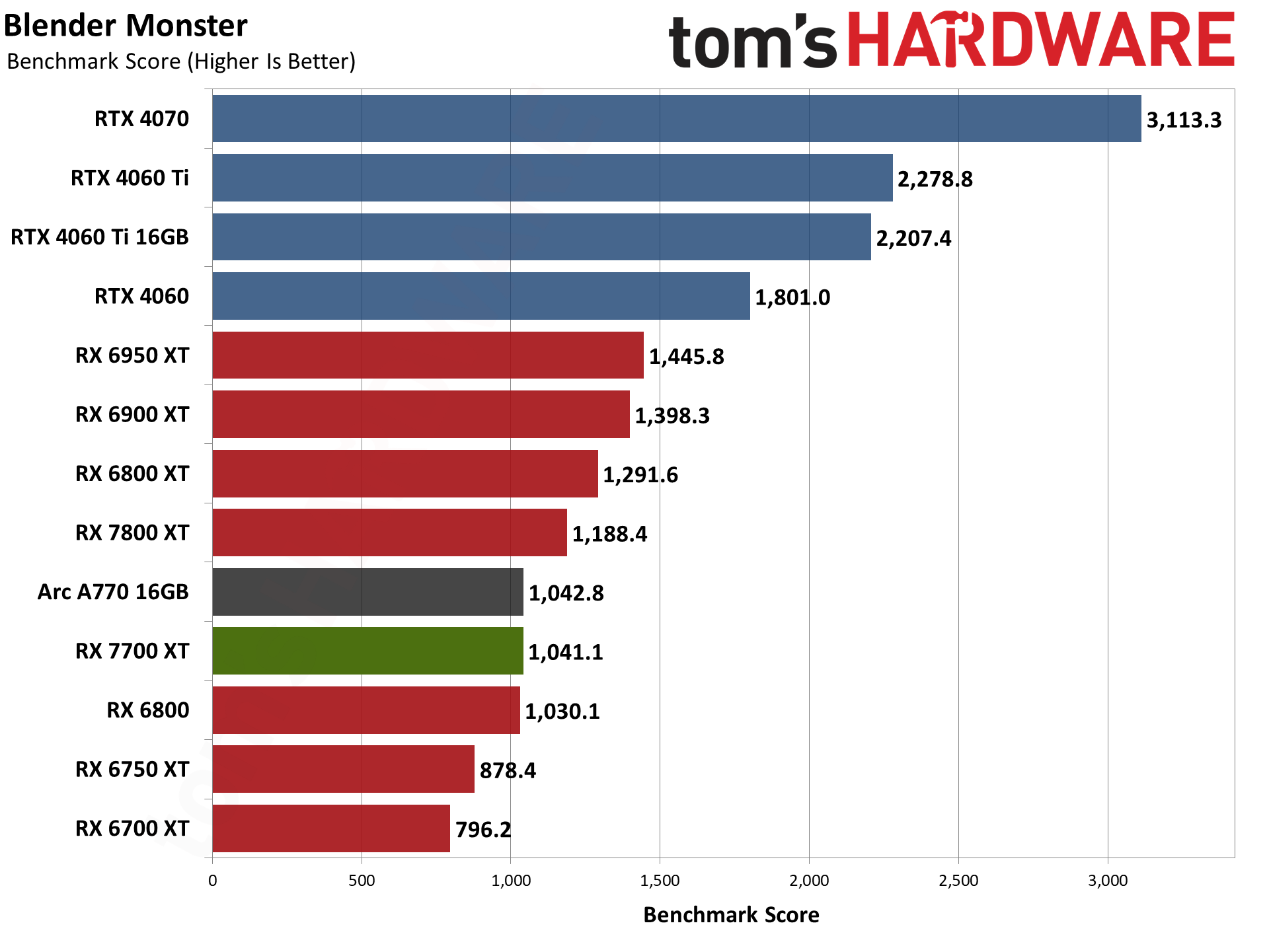
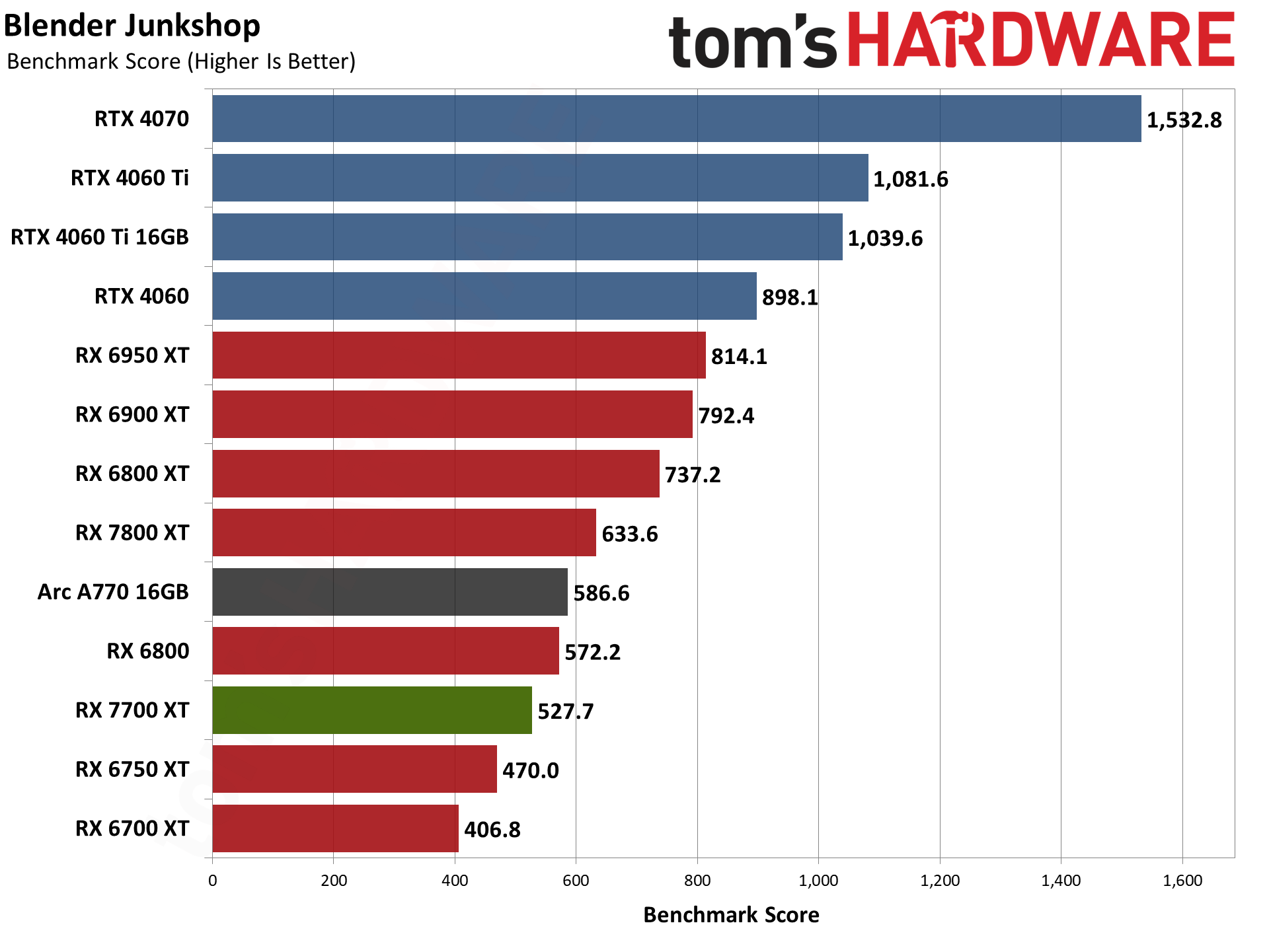
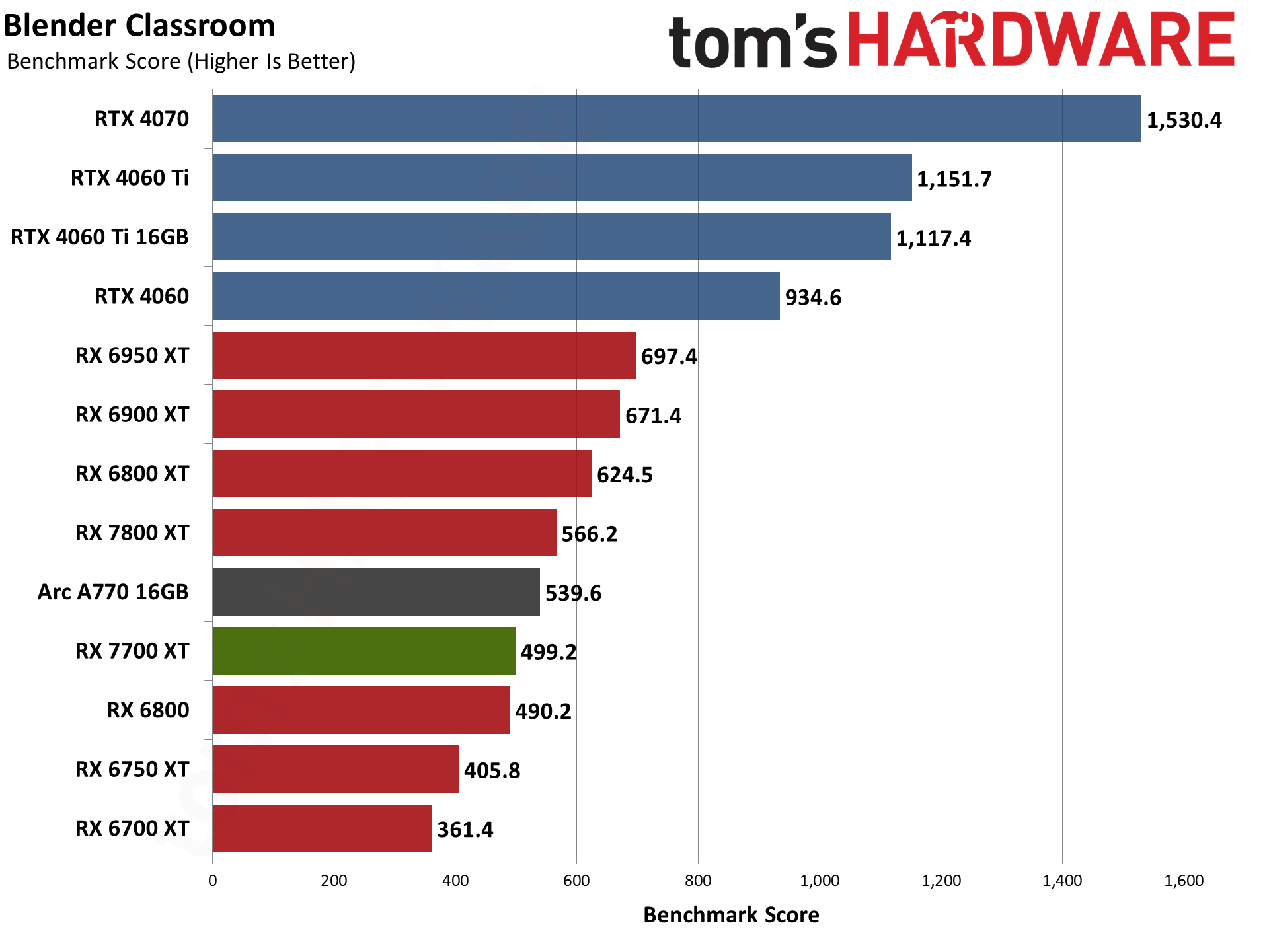
For GPU-accelerated 3D rendering, the only app that currently supports all three GPU vendors is Blender. It now leverages the ray tracing hardware to boost performance, and that generally puts Nvidia in the pole position.
The RTX 4060 Ti easily beats AMD's RX 7700 XT, more than doubling its performance. Intel's Arc A770 16GB also edges past the RX 7700 XT. At the same time, the RX 7700 does surpass the entire previous generation family, including the RX 6950 XT, so there are clearly some benefits from the new architecture.
Radeon RX 7700 XT Content Creation Summary
The RX 7700 XT follows typical trends in content creation benchmarks for AMD GPUs: It does quite well in SPECviewperf but struggles in the AI and Blender tests. Depending on your needs, it may or may not suffice as a professional GPU alternative.
- MORE: Best Graphics Cards
- MORE: GPU Benchmarks and Hierarchy
- MORE: All Graphics Content
Get Tom's Hardware's best news and in-depth reviews, straight to your inbox.
Current page: Radeon RX 7700 XT: Professional Content Creation and AI Performance
Prev Page Radeon RX 7700 XT: Bonus Gaming Tests Next Page Radeon RX 7700 XT: Power, Clocks, Temps, and Noise
Jarred Walton is a senior editor at Tom's Hardware focusing on everything GPU. He has been working as a tech journalist since 2004, writing for AnandTech, Maximum PC, and PC Gamer. From the first S3 Virge '3D decelerators' to today's GPUs, Jarred keeps up with all the latest graphics trends and is the one to ask about game performance.
